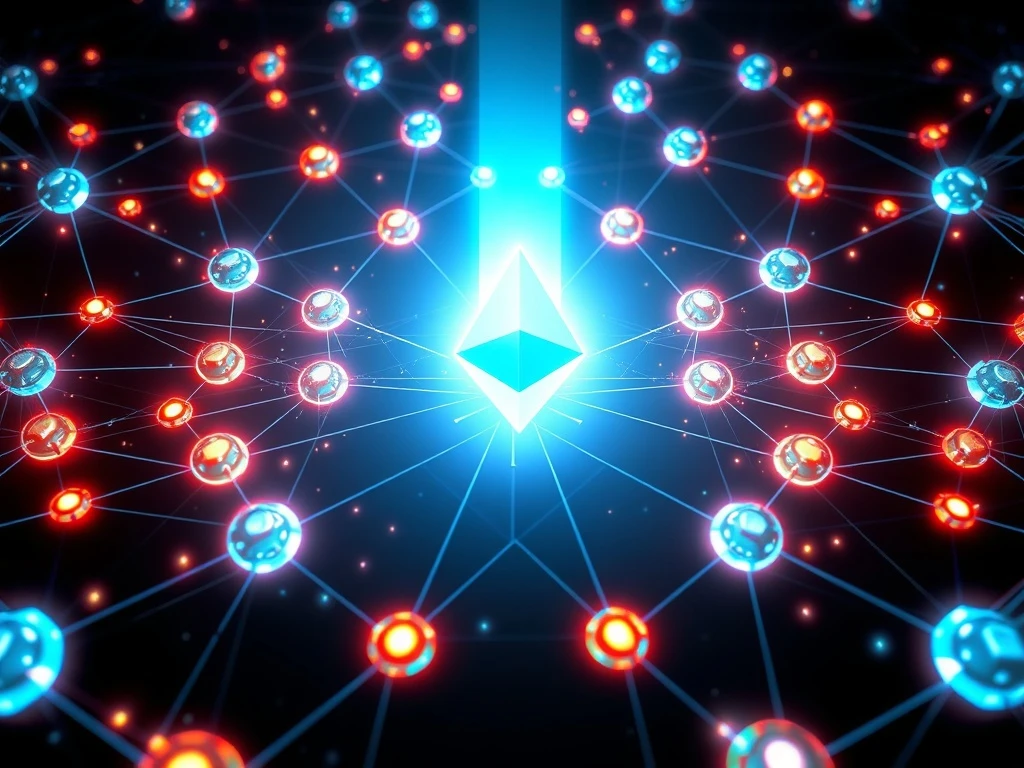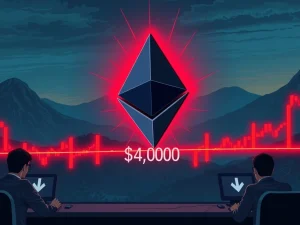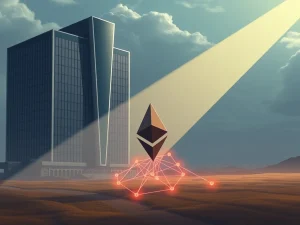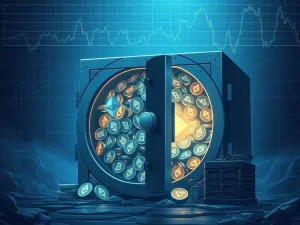Ethereum Fusaka Upgrade: A Crucial Leap Towards Unprecedented Scalability

The cryptocurrency world keenly watches as Ethereum’s journey toward a more scalable and efficient future reaches a critical juncture. The highly anticipated Ethereum Fusaka upgrade is now entering its final testnet phase. This pivotal update promises significant enhancements, fundamentally improving how the network operates. Ultimately, these changes lay essential groundwork for advanced capabilities like parallel execution, a major milestone in Ethereum’s ambitious roadmap.
Ethereum Fusaka Upgrade: Boosting Network Efficiency
Ethereum is currently undergoing the final testnet phase for its Fusaka upgrade. This represents the last major step before its expected mainnet rollout on December 3. A key change introduced by this update is a per-transaction gas cap. This limit restricts individual transactions to roughly 16.78 million units of gas. This new transaction gas cap directly addresses several critical network challenges.
Previously, a single transaction could consume up to the full block gas limit, which stood at around 45 million units. This situation created potential denial-of-service (DoS) risks. Furthermore, it limited overall network scalability. The new gas cap prevents any single transaction from monopolizing an entire block’s processing power. This ensures more even distribution of network activity.
By enforcing this per-transaction gas limit, Ethereum aims to achieve more efficient and predictable block composition. This design ensures that multiple smaller transactions can fit within a single block. This improves overall network throughput. The change is already active on the Holesky and Sepolia testnets, demonstrating its practical benefits. Such improvements are vital for a robust and responsive blockchain.
Unlocking Parallel Execution: A Major Scalability Milestone
The introduction of a precise transaction gas cap serves a larger strategic purpose. It is a crucial step in Ethereum’s broader transition toward parallel execution. This represents a major milestone in its roadmap. Parallel execution will enable multiple transactions to process simultaneously, rather than sequentially. This dramatically boosts the network’s processing capacity.
Consider the current sequential processing model. Transactions are processed one after another. This can create bottlenecks during periods of high demand. Conversely, parallel execution allows for concurrent processing. This significantly enhances Ethereum scalability. It means the network can handle a much greater volume of activity without congestion. Therefore, users will experience faster transaction confirmations and lower fees.
The current gas cap prepares the network environment for this future. It ensures that transactions are appropriately sized. This allows for their efficient distribution across multiple processing units when parallel execution becomes active. Without such foundational changes, the benefits of parallel execution would be harder to realize fully. This forward-thinking approach underscores Ethereum’s commitment to long-term growth.
PeerDAS: Revolutionizing Data Availability for Layer 2s
The Fusaka upgrade, also known as EIP-7825, brings several significant changes. Beyond the increased block gas limit (from 45 million to 60 million) and the per-transaction gas cap, its headline feature is PeerDAS. PeerDAS stands for Peer Data Availability Sampling. This innovative mechanism directly addresses the challenge of data availability, particularly for Layer 2 (L2) networks.
Under PeerDAS, Ethereum nodes do not need to store the entire dataset of Layer 2 ‘blob’ data. Instead, they store only small, random portions of this data. This approach maintains network security and data integrity. Crucially, it significantly reduces the hardware demands on individual nodes. This makes running an Ethereum node more accessible.
Furthermore, PeerDAS enables cheaper and higher-throughput scaling for Layer 2 networks. Layer 2 solutions rely on the main Ethereum chain for data availability. By optimizing this process, PeerDAS makes L2 transactions more cost-effective and faster. This directly contributes to overall Ethereum scalability. This feature builds upon the Dencun upgrade’s introduction of ‘blobs,’ further refining their utility and efficiency. The impact on the entire ecosystem will be profound, benefiting rollup technologies and decentralized applications alike.
From Testnets to Mainnet: The Crucial Road Ahead for Ethereum
The journey of the Ethereum Fusaka upgrade involves critical testnet phases. These stages are essential for validating the new features and ensuring a smooth mainnet deployment. The changes, including the per-transaction gas cap, have already been activated on the Holesky and Sepolia testnets. These environments allow developers to observe real-world performance.
The next phase of the Fusaka upgrade is scheduled for rollout on the Hoodi testnet on October 28. These testnet upgrades are crucial in building confidence ahead of the mainnet fork. Gabriel Trintinalia, a protocol Engineer at Consensys’ client Besu, stated, “These testnets upgrades are crucial in building confidence ahead of the mainnet fork, allowing client teams, validators and the ecosystem to validate performance, detect edge cases and fine-tune parameters before activation.” This rigorous testing ensures stability and security for the network.
Following these comprehensive tests, the mainnet deployment of the Fusaka upgrade is expected on December 3. This carefully planned rollout minimizes risks. It ensures that all client teams, validators, and the broader ecosystem are prepared for the changes. The successful execution of these testnet phases is paramount for Ethereum’s continued evolution and reliability.
Beyond Fusaka: Glimpses of Glamsterdam and Future Scalability
The Fusaka upgrade represents a significant step, but Ethereum’s development roadmap extends much further. Following Fusaka, the next major upgrade is named Glamsterdam. This future update will focus specifically on Ethereum’s execution layer. It will introduce EIP-7928, marking the network’s first major step directly toward true parallel transaction processing.
Glamsterdam aims to fully realize the vision of parallel execution, building upon the foundational work laid by Fusaka. This will dramatically increase transaction throughput. It will also reduce latency. Such advancements are crucial for supporting a global, high-demand decentralized ecosystem. These continuous upgrades highlight Ethereum’s commitment to ongoing innovation.
Each upgrade, from Dencun in March 2024 to Pectra on May 6, 2025, and now Fusaka, systematically addresses different aspects of the network. They all contribute to a cohesive strategy for enhancing Ethereum scalability. This methodical approach ensures that Ethereum remains at the forefront of blockchain technology. It provides a robust platform for decentralized applications and services worldwide.
Why These Upgrades Matter for Ethereum Scalability
The combined impact of the Fusaka upgrade’s features is substantial. The new transaction gas cap enhances block efficiency. It reduces denial-of-service risks. Furthermore, the increase in the overall block gas limit provides more capacity. These changes make the network more predictable and resilient.
More importantly, these modifications directly prepare the network for parallel execution. This future capability will transform Ethereum’s ability to process transactions. It will allow for unprecedented levels of throughput. This means faster, cheaper interactions for all users.
Finally, PeerDAS dramatically improves data availability for Layer 2 solutions. This reduces their operational costs and increases their scaling potential. Ultimately, these upgrades are not just technical adjustments. They are foundational elements for a more powerful, efficient, and accessible Ethereum. They reinforce its position as a leading platform for decentralized innovation. The successful deployment of the Ethereum Fusaka upgrade on December 3 will mark another triumphant chapter in this ongoing evolution.










